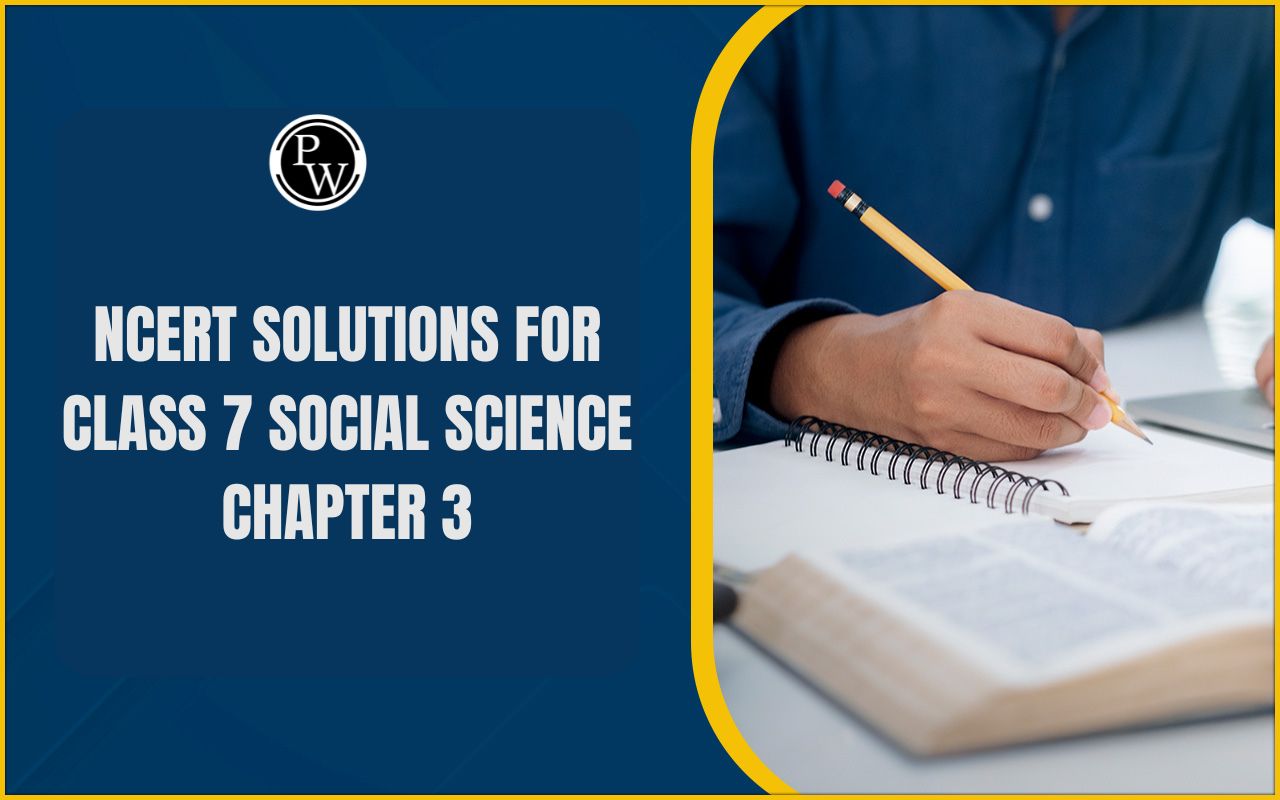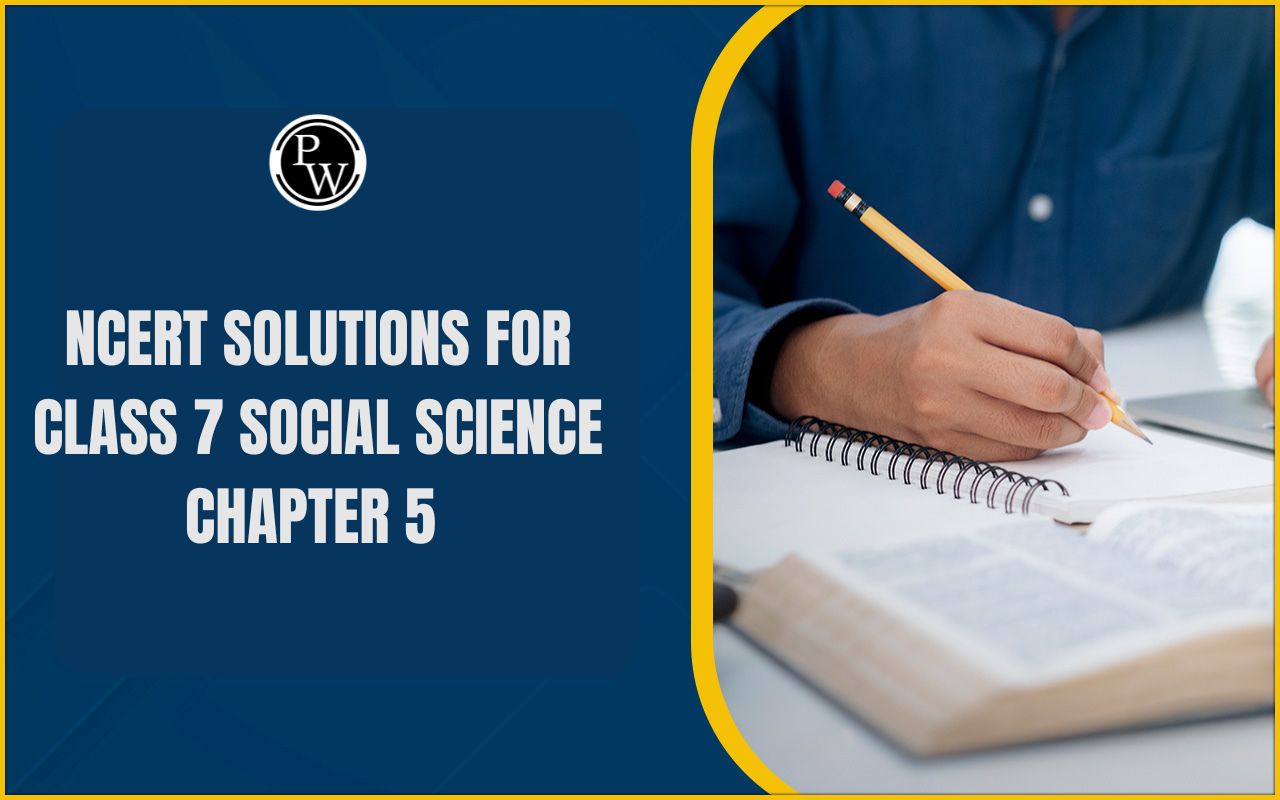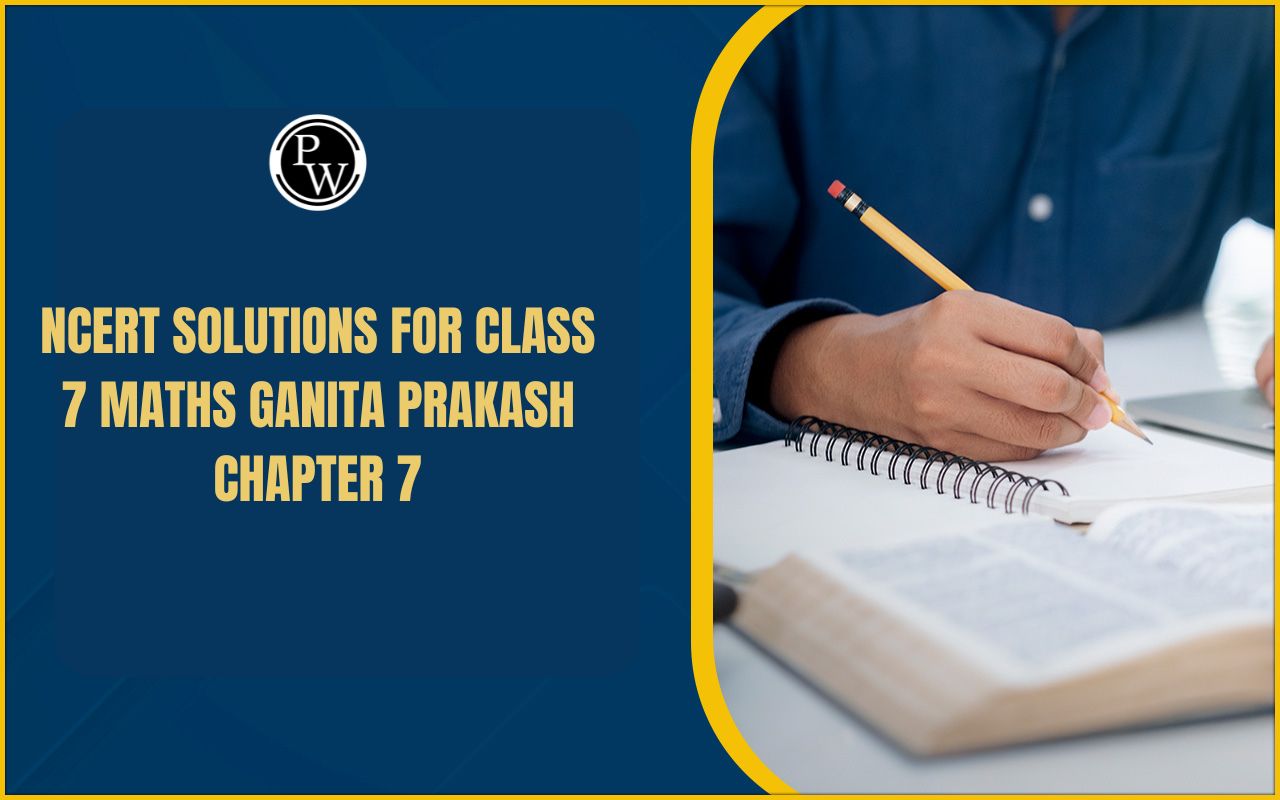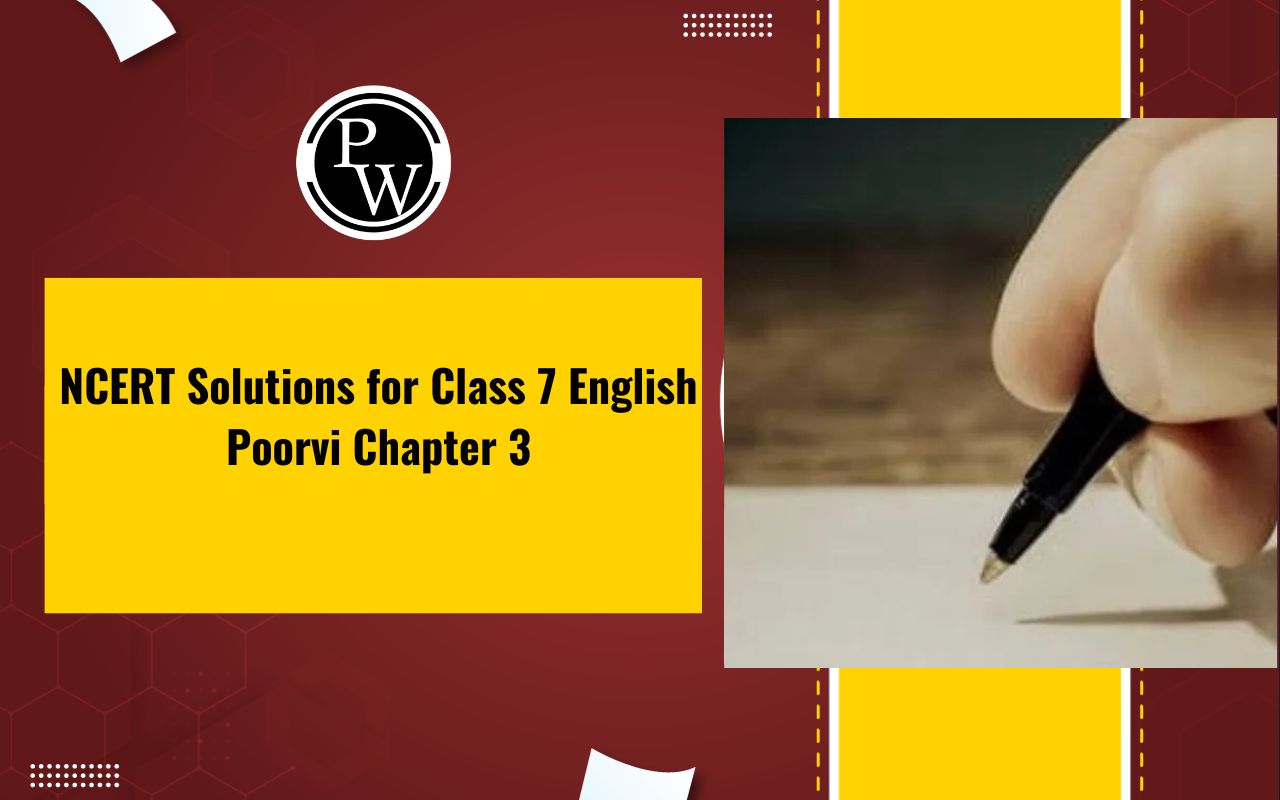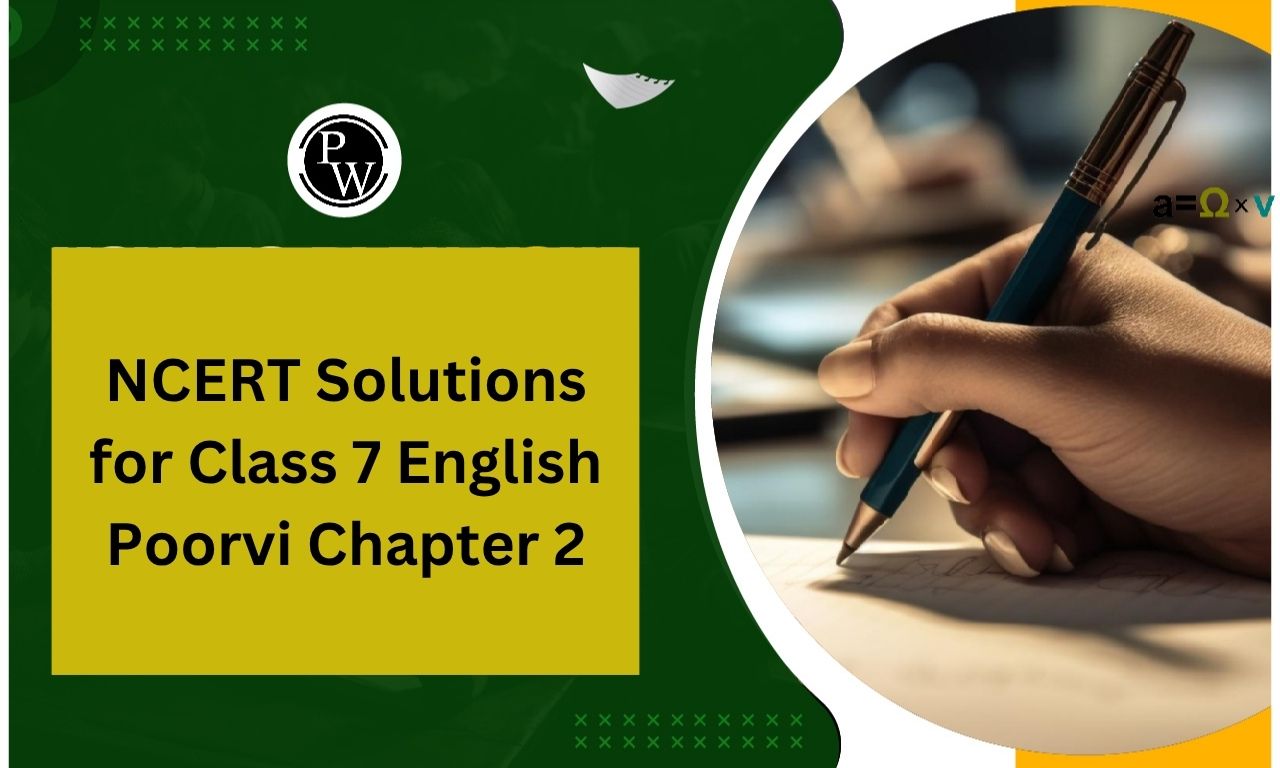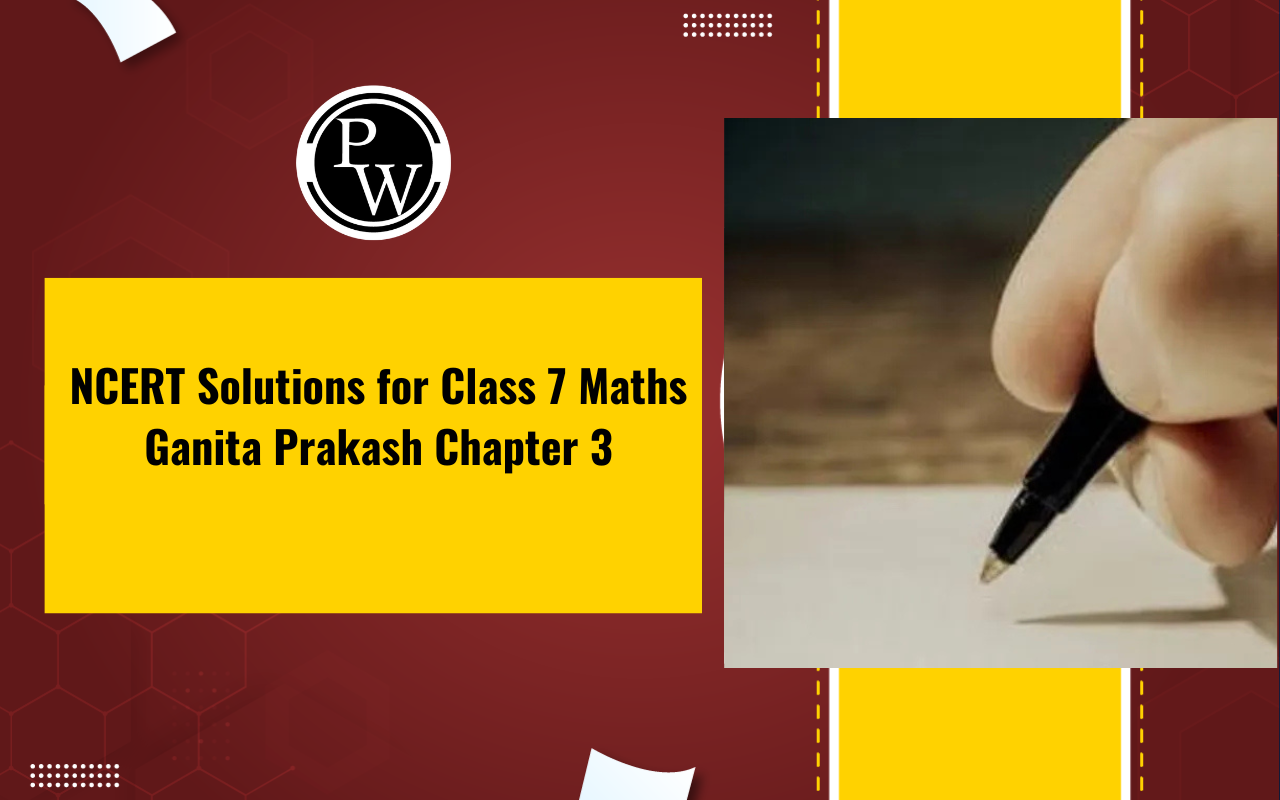
NCERT Solutions for Class 7 Social Science Civics Chapter 3
NCERT Solutions for Class 7 Social Science Civics Chapter 3: NCERT Solutions for Class 7 Civics Chapter 3 provides comprehensive guidance to students in formulating answers for the exercise questions. Crafted by our experienced faculty, these solutions cover all key topics, aiding students in understanding how to structure their answers during exams. Engaging with these solutions ensures students are well-prepared to tackle various question types that may appear in examinations. They encapsulate the main topics and concepts from the NCERT Class 7 textbooks, serving as a progression from earlier classes to more advanced topics.NCERT Solutions for Class 7 Social Science Civics Chapter 3 Overview
In the Class 7 Social Science book, students encounter diverse questions like "How did some MLAs become ministers?" in Chapter 3 of NCERT Class 7 Civics. However, many students encounter challenges while navigating through this chapter. Fortunately, NCERT Solutions for Class 7 Social Science Civics Chapter 3 are readily accessible on the Physics Wallah website.CBSE Board Exam Centre List 2024
NCERT Solutions for Class 7 Social Science Civics Chapter 3 How The State Government Works
The key topics covered in Chapter 3 of Class 7 Social Science Civics, titled "How the State Government Works," focus on understanding the structure, functions, and responsibilities of the state government in India. Below are the key topics outlined:- Introduction to State Government: This section provides an overview of the state government system in India, highlighting its role in governing the states and union territories. It discusses the organization of the state government, including the legislative, executive, and judiciary branches.
- State Legislature: The chapter explores the composition and functions of the state legislature, comprising the Legislative Assembly and the Legislative Council (in states where it exists). It discusses the roles of MLAs (Members of Legislative Assembly) and MLCs (Members of Legislative Council) in lawmaking and representing the interests of their constituents.
- State Executive: This section delves into the structure and functions of the state executive, headed by the Governor. It discusses the roles and powers of the Chief Minister, Council of Ministers, and state bureaucracy in administering the state government and implementing policies and programs.
- State Judiciary: The chapter examines the role of the state judiciary in interpreting laws, adjudicating disputes, and upholding the rule of law. It discusses the hierarchy of state courts, including the High Court and subordinate courts, and their functions in dispensing justice at the state level.
- Elections and Political Parties: This section explores the electoral process in state governments, including the conduct of state assembly elections, the role of political parties, and the significance of democratic principles in state governance. It discusses the electoral system, voter participation, and the importance of political parties in shaping state policies and governance.
- Local Government: The chapter highlights the role of local government institutions, such as Panchayats and Municipalities, in decentralized governance and grassroots democracy. It discusses the functions and powers of local governments in delivering essential services, promoting local development, and fostering citizen participation in decision-making processes.
- Challenges and Opportunities: This section addresses the challenges and opportunities facing state governments in India, such as regional disparities, administrative inefficiencies, corruption, and the need for greater transparency and accountability. It emphasizes the importance of effective governance, citizen engagement, and innovative policy solutions in addressing these challenges and advancing state development.
| CBSE Syllabus Class 7 | |
| CBSE Class 7 English Syllabus | CBSE Class 7 Math Syllabus |
| CBSE Class 7 Social Science Syllabus | CBSE Class 7 Science Syllabus |
NCERT Solutions for Class 7 Social Science Civics Chapter 3 Important Questions
Here are some important questions for Class 7 Social Science Civics Chapter 3: How the State Government Works: 1) What are the main components of the state government in India? Explain their roles briefly. The main components of the state government in India include the Legislature, Executive, and Judiciary.- The Legislature, comprising the Legislative Assembly and Legislative Council where applicable, is responsible for making laws, representing the interests of the people, and overseeing the functioning of the government.
- The Executive, headed by the Governor and assisted by the Chief Minister and Council of Ministers, is responsible for implementing laws, administering the state, and formulating policies and programs.
- The Judiciary, including the High Court and subordinate courts, is responsible for interpreting laws, adjudicating disputes, and upholding the rule of law.
 6) Discuss the electoral process for state assembly elections in India.
State assembly elections in India are conducted using the first-past-the-post system. Voters elect Members of Legislative Assembly (MLAs) for their respective constituencies. The Election Commission of India oversees the conduct of elections, including voter registration, candidate nomination, polling, and counting of votes. The political party or coalition with the majority of seats forms the government in the state.
7) What is the significance of political parties in state governance? Explain with examples.
Political parties play a significant role in state governance by providing a platform for political participation, representing diverse interests, and shaping public policies and decisions. They mobilize voters, contest elections, form governments, and hold elected representatives accountable. For example, the Bharatiya Janata Party (BJP) and Indian National Congress (INC) are prominent political parties with significant influence in state governance.
8) Describe the role and functions of local government institutions in India.
Local government institutions, such as Panchayats and Municipalities, are responsible for decentralized governance and grassroots democracy. They deliver essential services, promote local development, and facilitate citizen participation in decision-making processes. Panchayats are elected bodies at the village, intermediate, and district levels, while Municipalities govern urban areas.
9) What challenges do state governments face in India? How can these challenges be addressed?
State governments in India face challenges such as corruption, administrative inefficiencies, fiscal deficits, regional disparities, and political instability. These challenges can be addressed through effective governance, administrative reforms, transparency and accountability measures, equitable resource allocation, and citizen engagement in governance processes.
10) Discuss the importance of citizen participation in state governance. How can citizens contribute to improving the functioning of the state government?
Citizen participation is crucial for promoting accountability, transparency, and responsiveness in state governance. Citizens can contribute to improving the functioning of the state government by exercising their democratic rights, participating in elections, engaging with elected representatives, providing feedback on government policies and programs, and actively participating in local governance initiatives such as Gram Sabhas and Ward Committees.
By holding governments accountable and advocating for their needs and interests, citizens can play an active role in shaping state policies and governance.
6) Discuss the electoral process for state assembly elections in India.
State assembly elections in India are conducted using the first-past-the-post system. Voters elect Members of Legislative Assembly (MLAs) for their respective constituencies. The Election Commission of India oversees the conduct of elections, including voter registration, candidate nomination, polling, and counting of votes. The political party or coalition with the majority of seats forms the government in the state.
7) What is the significance of political parties in state governance? Explain with examples.
Political parties play a significant role in state governance by providing a platform for political participation, representing diverse interests, and shaping public policies and decisions. They mobilize voters, contest elections, form governments, and hold elected representatives accountable. For example, the Bharatiya Janata Party (BJP) and Indian National Congress (INC) are prominent political parties with significant influence in state governance.
8) Describe the role and functions of local government institutions in India.
Local government institutions, such as Panchayats and Municipalities, are responsible for decentralized governance and grassroots democracy. They deliver essential services, promote local development, and facilitate citizen participation in decision-making processes. Panchayats are elected bodies at the village, intermediate, and district levels, while Municipalities govern urban areas.
9) What challenges do state governments face in India? How can these challenges be addressed?
State governments in India face challenges such as corruption, administrative inefficiencies, fiscal deficits, regional disparities, and political instability. These challenges can be addressed through effective governance, administrative reforms, transparency and accountability measures, equitable resource allocation, and citizen engagement in governance processes.
10) Discuss the importance of citizen participation in state governance. How can citizens contribute to improving the functioning of the state government?
Citizen participation is crucial for promoting accountability, transparency, and responsiveness in state governance. Citizens can contribute to improving the functioning of the state government by exercising their democratic rights, participating in elections, engaging with elected representatives, providing feedback on government policies and programs, and actively participating in local governance initiatives such as Gram Sabhas and Ward Committees.
By holding governments accountable and advocating for their needs and interests, citizens can play an active role in shaping state policies and governance.
NCERT Solutions for Class 7 Social Science Civics Chapter 3 PDF Download
NCERT Solutions for Class 7 Social Science Civics Chapter 3 Long & Short Questions & Answers
Below are the NCERT solutions for Class 7 Social Science Civics Chapter 3, including both long and short questions with their respective answers:Short Questions and Answers:
1) What are the three main components of the state government in India? Answer: The three main components of the state government in India are the Legislature, Executive, and Judiciary. 2) What is the role of the Governor in the state government? Answer: The Governor acts as the constitutional head of the state and performs various functions such as appointing the Chief Minister, summoning and proroguing the state legislature, and assenting to bills passed by the legislature. 3) What is the primary function of the state legislature? Answer: The primary function of the state legislature is to make laws, approve the state budget, and oversee the functioning of the government. 4) Who constitutes the state executive? Answer: The state executive consists of the Governor, Chief Minister, Council of Ministers, and the state bureaucracy. 5) What is the significance of the state judiciary? Answer: The state judiciary interprets laws, resolves disputes, upholds the rule of law, and safeguards fundamental rights at the state level.Long Questions and Answers:
1) Discuss the functions of the state legislature in India. Answer: The state legislature is responsible for making laws, approving the state budget, scrutinizing government policies and programs, representing the interests of the people, and overseeing the functioning of the government. It consists of two houses: the Legislative Assembly and the Legislative Council (where applicable). 2) Explain the role and powers of the Governor in the state government. Answer: The Governor is the constitutional head of the state and performs various functions such as appointing the Chief Minister, summoning and proroguing the state legislature, assenting to bills passed by the legislature, and exercising discretionary powers in certain situations. The Governor represents the President of India at the state level. 3) Describe the functions of the state executive. Answer: The state executive is responsible for implementing laws and policies, administering the state, managing public services, and ensuring the efficient functioning of government departments and agencies. It consists of the Governor, Chief Minister, Council of Ministers, and the state bureaucracy. 4) What is the electoral process for state assembly elections in India? Answer: State assembly elections in India are conducted using the first-past-the-post system. Voters elect Members of Legislative Assembly (MLAs) for their respective constituencies. The Election Commission of India oversees the conduct of elections, including voter registration, candidate nomination, polling, and counting of votes. 5) Discuss the role of local government institutions in India. Answer: Local government institutions, such as Panchayats and Municipalities, play a crucial role in decentralized governance and grassroots democracy. They deliver essential services, promote local development, facilitate citizen participation in decision-making processes, and ensure the effective implementation of government schemes at the local level. These NCERT solutions cover the essential concepts discussed in Chapter 3 of Class 7 Social Science Civics, providing a comprehensive understanding of how the state government works in India.NCERT Solutions for Class 7 Social Science Civics Chapter 3 Exercise Questions With Answers
1) Explain the role of an MLA using the terms ‘constituency’ and ‘represent’. Solution: Each state is divided into constituencies based on population. These constituencies elect representatives to the Legislative Assembly, with each constituency choosing one MLA. An MLA, or Member of Legislative Assembly, represents their constituency at the state level. They are elected through a general election, either as part of a political party or as independent candidates. MLAs are responsible for voicing the needs and demands of their constituents in the Legislative Assembly. 2) How do MLAs become Ministers? Solution: Following a general election, the party that secures the majority of votes forms the government. The elected leader of the majority party becomes the Chief Minister. The Chief Minister then selects members from their party to form the cabinet, in consultation with the Governor. These MLAs, now ministers, are assigned specific portfolios such as health, education, etc. They become responsible for managing the affairs of their respective portfolios. 3) Why is it important for decisions taken by the Chief Minister and other ministers to be debated in the Legislative Assembly? Solution: Debating decisions in the Legislative Assembly ensures transparency and accountability in governance. It allows for scrutiny of decisions to ensure they are in the public interest. Additionally, discussions help determine the priority of decisions, assess their cost implications, and consider any objections from specific communities. Ultimately, debating decisions in the Assembly ensures democratic participation and oversight in the decision-making process. 4) Describe the actions taken in response to the problem in Patalpuram by different entities.Solution:
- Public meeting: The public condemned the government, organized protests, and presented their demands.
- Legislative Assembly: Discussion on the issue took place, and a course of action was decided upon.
- Press conference: The health minister presented the government's plan of action to address the problem.
- Chief Minister: The Chief Minister visited Patalpuram, announced compensation for affected families, and outlined future actions to resolve the problem.
NCERT Solutions for Class 7 Social Science Civics Chapter 3 Summary
Chapter 3 of NCERT Class 7 Social and Political Life – II, titled "How the State Government Works," delves into the functioning of the state government in India. The chapter covers various topics, including the role of MLAs, debates in the Legislative Assembly, and the working of the government. Here's a detailed summary of the key points discussed in the chapter: 1) Who is an MLA? The chapter begins by introducing the concept of an MLA, which stands for Member of Legislative Assembly. MLAs are elected representatives who represent their constituencies in the state legislature. They are responsible for making laws, debating issues, and representing the interests of their constituents in the Legislative Assembly. 2) A Debate in the Legislative Assembly: The chapter provides insights into the functioning of the Legislative Assembly, where MLAs engage in debates and discussions on various issues of public importance. Debates in the Assembly are an essential aspect of the democratic process, allowing MLAs to express their opinions, present arguments, and scrutinize government policies and decisions. 3) Working of the Government: The chapter explores the working of the government at the state level, focusing on the roles and responsibilities of the Chief Minister, Council of Ministers, and state bureaucracy. It discusses how decisions are made, policies are formulated, and programs are implemented by the state government to address the needs and concerns of the people. In summary, Chapter 3 provides a comprehensive understanding of how the state government functions in India. It explains the roles and responsibilities of MLAs, the dynamics of debates in the Legislative Assembly, and the mechanisms of governance at the state level. By studying this chapter, students gain insights into the democratic process, governance structures, and the functioning of state institutions in India. This chapter emphasizes the importance of citizen participation, transparency, and accountability in state governance, highlighting the role of MLAs in representing the interests of their constituents and ensuring effective governance. Through examples and case studies, students learn about the complexities of state politics, the challenges faced by state governments, and the mechanisms for addressing public issues and concerns.NCERT Solutions for Class 7 Social Science Civics Chapter 3 FAQs
Who is an MLA and what is their role in the state government?
An MLA, or Member of Legislative Assembly, is an elected representative who represents a specific constituency in the state legislature. Their role involves making laws, debating issues, and representing the interests of their constituents in the Legislative Assembly.
What happens during a debate in the Legislative Assembly?
During a debate in the Legislative Assembly, MLAs discuss various issues of public importance, present arguments, express opinions, and scrutinize government policies and decisions. Debates allow for the exchange of ideas and viewpoints among MLAs and contribute to the democratic decision-making process.
What is the function of the Chief Minister in the state government?
The Chief Minister is the head of the state government and is responsible for coordinating the functioning of the government, formulating policies, implementing programs, and representing the state at the national level. They play a crucial role in decision-making and governance at the state level.
How does the state government work to address the needs of the people?
The state government works to address the needs of the people by formulating policies, implementing programs, and providing essential services such as education, healthcare, infrastructure, and welfare schemes. It engages in legislative debates, allocates resources, and collaborates with various stakeholders to promote the well-being and development of the state.
What is the significance of citizen participation in state governance?
Citizen participation is crucial for ensuring accountability, transparency, and responsiveness in state governance. It allows citizens to voice their concerns, contribute to policy-making processes, hold elected representatives accountable, and actively participate in decision-making at the local and state levels.
🔥 Trending Blogs
Talk to a counsellorHave doubts? Our support team will be happy to assist you!

Check out these Related Articles
Free Learning Resources
PW Books
Notes (Class 10-12)
PW Study Materials
Notes (Class 6-9)
Ncert Solutions
Govt Exams
Class 6th to 12th Online Courses
Govt Job Exams Courses
UPSC Coaching
Defence Exam Coaching
Gate Exam Coaching
Other Exams
Know about Physics Wallah
Physics Wallah is an Indian edtech platform that provides accessible & comprehensive learning experiences to students from Class 6th to postgraduate level. We also provide extensive NCERT solutions, sample paper, NEET, JEE Mains, BITSAT previous year papers & more such resources to students. Physics Wallah also caters to over 3.5 million registered students and over 78 lakh+ Youtube subscribers with 4.8 rating on its app.
We Stand Out because
We provide students with intensive courses with India’s qualified & experienced faculties & mentors. PW strives to make the learning experience comprehensive and accessible for students of all sections of society. We believe in empowering every single student who couldn't dream of a good career in engineering and medical field earlier.
Our Key Focus Areas
Physics Wallah's main focus is to make the learning experience as economical as possible for all students. With our affordable courses like Lakshya, Udaan and Arjuna and many others, we have been able to provide a platform for lakhs of aspirants. From providing Chemistry, Maths, Physics formula to giving e-books of eminent authors like RD Sharma, RS Aggarwal and Lakhmir Singh, PW focuses on every single student's need for preparation.
What Makes Us Different
Physics Wallah strives to develop a comprehensive pedagogical structure for students, where they get a state-of-the-art learning experience with study material and resources. Apart from catering students preparing for JEE Mains and NEET, PW also provides study material for each state board like Uttar Pradesh, Bihar, and others
Copyright © 2025 Physicswallah Limited All rights reserved.
Get App

